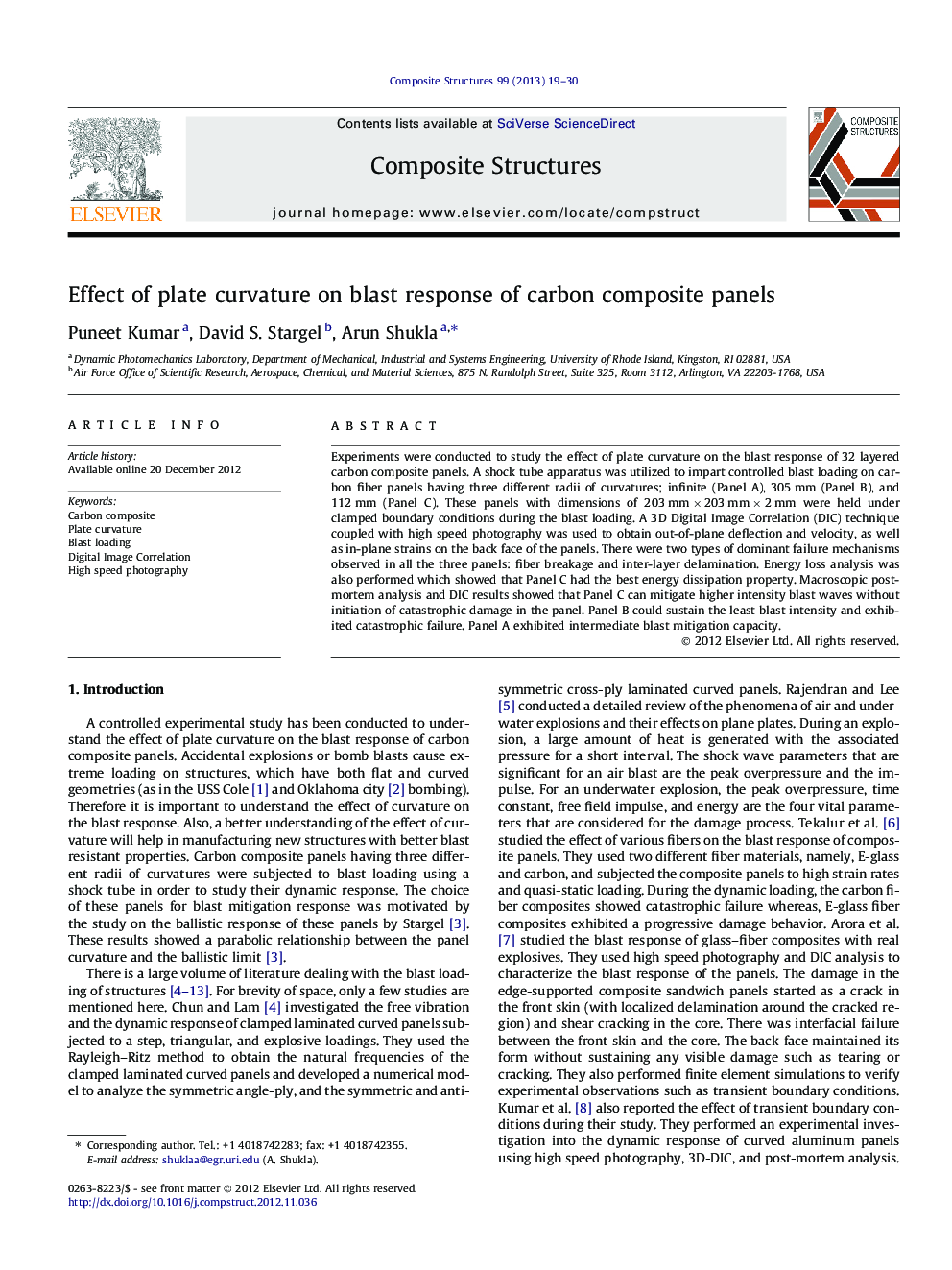| Article ID | Journal | Published Year | Pages | File Type |
|---|---|---|---|---|
| 252209 | Composite Structures | 2013 | 12 Pages |
Experiments were conducted to study the effect of plate curvature on the blast response of 32 layered carbon composite panels. A shock tube apparatus was utilized to impart controlled blast loading on carbon fiber panels having three different radii of curvatures; infinite (Panel A), 305 mm (Panel B), and 112 mm (Panel C). These panels with dimensions of 203 mm × 203 mm × 2 mm were held under clamped boundary conditions during the blast loading. A 3D Digital Image Correlation (DIC) technique coupled with high speed photography was used to obtain out-of-plane deflection and velocity, as well as in-plane strains on the back face of the panels. There were two types of dominant failure mechanisms observed in all the three panels: fiber breakage and inter-layer delamination. Energy loss analysis was also performed which showed that Panel C had the best energy dissipation property. Macroscopic postmortem analysis and DIC results showed that Panel C can mitigate higher intensity blast waves without initiation of catastrophic damage in the panel. Panel B could sustain the least blast intensity and exhibited catastrophic failure. Panel A exhibited intermediate blast mitigation capacity.
